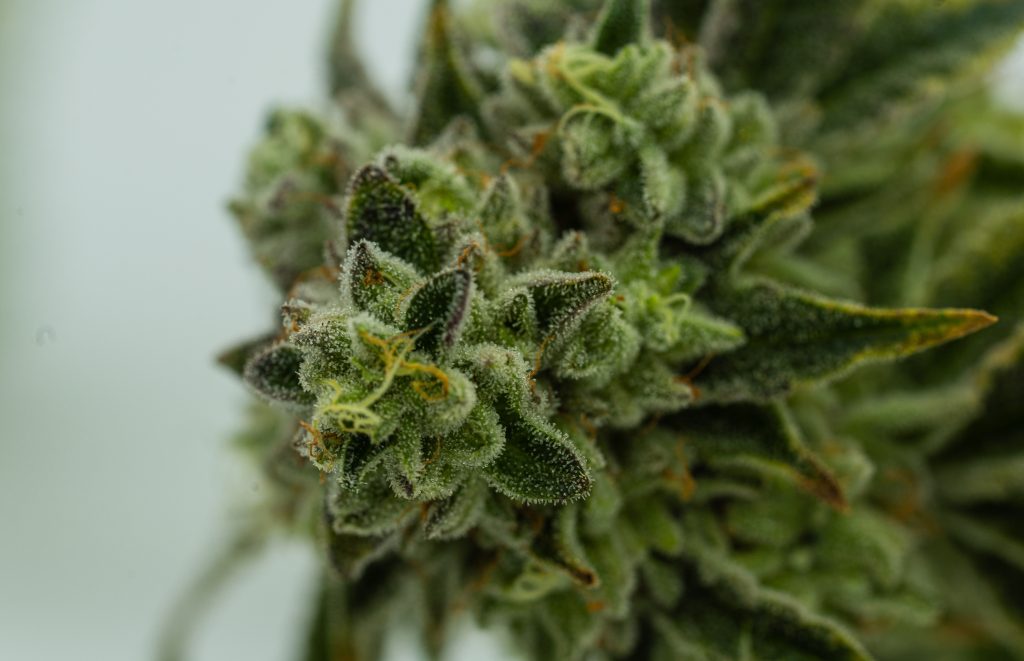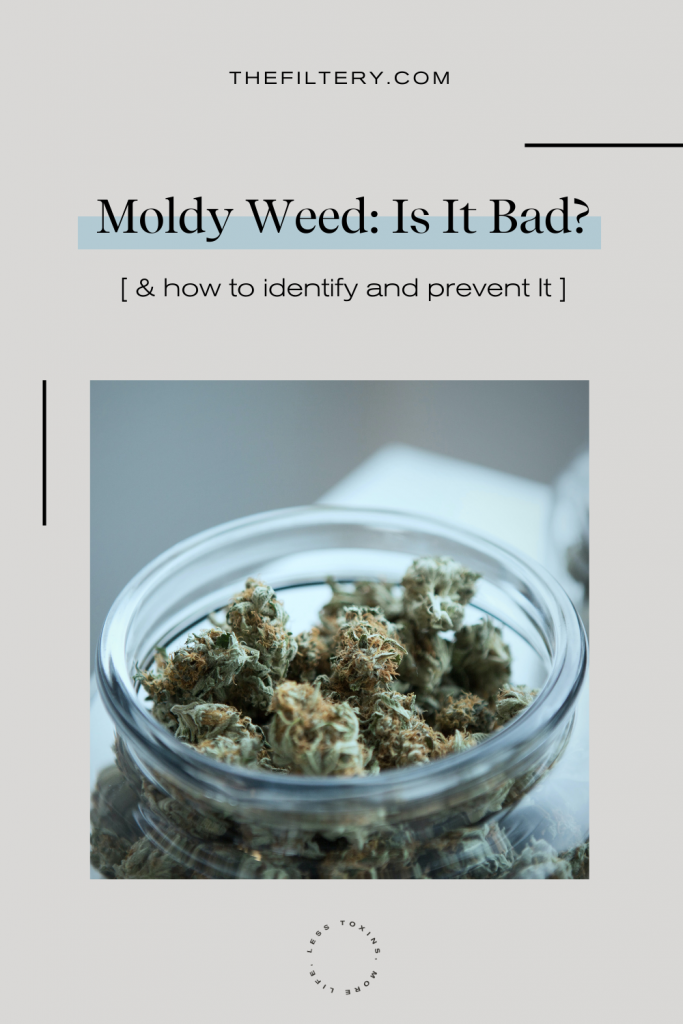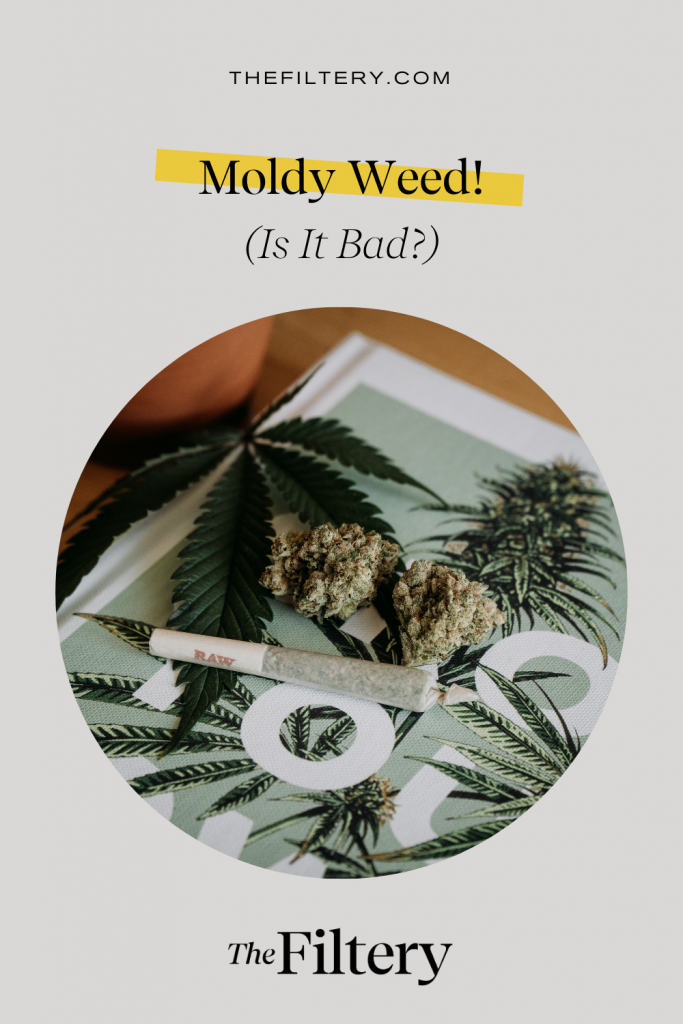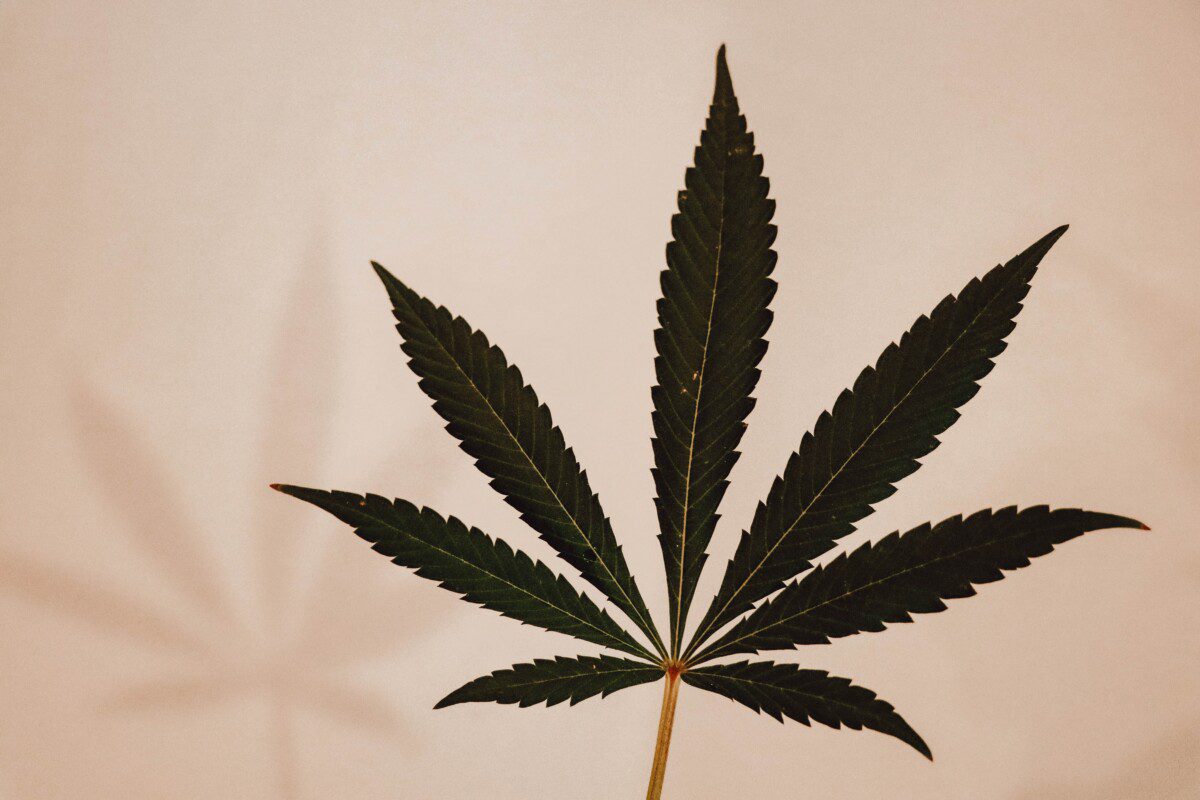Over the past several years, there have been several recalls for moldy weed, from Colorado to Michigan to Florida.
Cannabis can become moldy during just about any part of the process—during growing, drying, or storing. Weed is at risk for mold when its environment is not correctly controlled for humidity and air ventilation and the atmosphere in which it is living or being stored is too moist for too long.
Moldy weed can be dangerous, so if you’re a cannabis consumer, it’s important to be aware of the potential problem, how to identify it, and what you can do to prevent your stash from becoming moldy.
Table of Contents
Is Mold on Cannabis Bad?
Mold is not good for anyone, but it may be worse for some individuals. About 25% of the population carries a certain gene that makes them more susceptible to illness from mold—whether that mold comes from a water-damaged building or from mold on weed.
Others who may be at increased risk for a negative reaction to mold include people with asthma or other respiratory conditions, autoimmune disorders, chemical sensitivities, and/or other chronic conditions.
What Are the Symptoms of Mold Exposure?
Those who are allergic to mold and/or at risk of a serious negative reaction due to other health conditions may experience inflammation of the lungs and sinuses when smoking moldy weed, causing the following symptoms:
- congestion
- coughing/wheezing
- sinus pain
- increased anxiety
- fatigue
- ice pick pain
- and others
Symptoms and severity will also depend on the strain of mold growing on the cannabis. Some types of fungi, like Aspergillus, Mucor, and Cryptococcus, can cause very serious infections in the lungs, central nervous system, and brain of those with compromised immune systems.
Unfortunately, it’s impossible to determine the strain of mold without a lab test, so it’s best to just treat all mold equally.
What is Bud Rot?
You may have heard of the term “bud rot.” There are many different types of mold that can attack cannabis and while some of them may be more dangerous than others, none of them are good. Bud rot is a type of mold that starts in the core of a cannabis stem and grows outward. In a general sense, the terms “bud rot” and “moldy weed” can be used synonymously.
Body
The Best & Worst Hemp Soap & Body Wash Brands
Let’s first answer some of your most commonly-asked questions about hemp soap and body wash. Then we’ll give you our recommended (and NOT recommended) brands.
Can You Smoke Moldy Weed?
Depending on your health, the types of mold growing on your bud, and just how much mold is there, the dangers of smoking moldy weed can vary widely. As referenced above, if you have allergies, an auto-immune condition, and/or other chronic conditions, it is strongly recommended you stay far away from moldy weed.
But even if you’re not in the higher-risk category, that doesn’t mean you shouldn’t take moldy weed seriously. Even in perfectly healthy individuals, moldy weed can cause things like coughing and nausea.
It’s recommended that everyone, regardless of health status or history, steer clear of moldy weed. Once moldy mycotoxins get into your body, they can be very difficult to get rid of, and can even grow and spread once inside. These toxic mold spores can build up slowly, causing more serious symptoms over a longer period of time. So even if moldy weed doesn’t pose an immediate danger to you in the short term, you could end up paying later on.
In short: don’t smoke moldy weed.
How to Identify Moldy Marijuana
There are a few ways to try and identify mold on weed:
1. Take a look.
Sometimes, you can tell if you’re dealing with moldy weed just by looking at it. If your weed looks like it has cobwebs or has been rolled in dust or powder, then there’s a good chance you’re dealing with mold. You may have to peel back the outer part of the bud and dig toward the stem a little bit, since mold is more likely to start growing on the inside of the plant where it’s darker, more compact, and has less airflow.
Be aware, however, that mold is sneaky. Just because you don’t see it doesn’t mean it’s not there.
2. Take a sniff.
Some noses can more easily identify the subtle scents of mold and mildew than others. Similarly, some people are more tuned in to the nuances of cannabis smells and may be able to more easily tell if something is off. If you take a sniff and the bud smells like must or mildew, or has hints of sweat or urine, it might be best to stay away.
3. Use a microscope.
What might be unavailable to the naked eye may be more easily identified with a microscope. You don’t necessarily need anything fancy; you can get a pocket-sized microscope for under $15 and use that to search for mold on your weed.
4. Keep your eye on recalls.
It can’t hurt to search the media and cannabis brand websites to see if there have been any recalls of the strains you’ve bought or are considering buying.

Trichomes Vs. Mold
Depending on whether you’re a novice or cannabis connoisseur, it may be difficult to tell the difference between trichomes and mold. But being able to tell the difference is important when it comes to evaluating your bud for mold.
Trichomes are tiny crystalline structures that have bulbouses on their heads, so they kind of look like crystal mushrooms. Trichomes are incredibly important in the production of more than 400 compounds, including cannabinoids and terpenes (the compounds that determine the smell of plants). Trichomes will often be more visibly apparent on higher quality cannabis.
Trichomes have a sparkly quality to them and are pretty evenly spread over the whole flower, whereas mold has an old, matte look and is often concentrated into clumps or spots. It could be said that trichomes are much prettier than mold.
Sometimes, you will be able to easily tell the difference between trichomes and mold with just the naked eye, whereas other times you may want to use a microscope to make sure you’re differentiating between the two.
Is Cannabis Tested for Mold?
Many brands do test their products for mold before releasing them to dispensaries. Ohio Clean Leaf, for example, uses a third-party lab to test their bud not only for mycotoxins (a.k.a. mold) but also heavy metals, pesticides, and other “foreign matter.” Customers can scan the QR code on the side of the container to get more information about which tests were performed, along with more info about the strain and batch.
However, laws, regulations, and processes differ from state to state, so you may want to make yourself aware of what is required of cannabis companies in your state. To play it safe, it’s recommended that you ask your budtender which companies perform the strictest testing and have the cleanest track record when it comes to mold and mycotoxins, especially if you have chronic health conditions.
What About Edibles?
We know flower can get moldy, but edibles should be safe, right? Not necessarily. One company in Canada had to recall their THC gummies because of mold after receiving several complaints from customers. To be safe, it’s best to purchase from companies that test for mold and mycotoxins, regardless of the form you’re getting it in.
How to Save Moldy Weed
What do you do with moldy cannabis? Is there a moldy weed fix?
Unfortunately, the answer is no. There is no way to clean, save, or salvage moldy weed. Because of the way mold spores spread, even breaking off the visibly moldy parts and smoking the rest isn’t safe.
Some claim that cooking your weed will get rid of the mold, but unfortunately, even “dead” mold spores can cause damage, so cooking your moldy weed won’t actually do much good at all.
It’s bad news, but the safe bet is to toss moldy weed.
How to Prevent Cannabis from Getting Moldy
All the precautions taken by growers and distributors can only go so far if you let your weed grow mold after you buy it. That’s why it’s important to know how to prevent your weed from becoming moldy once it’s in your possession but before you smoke it.
1. Cultivate correctly
If you’re getting your cannabis from a dispensary, then you shouldn’t have to worry about this part. But if you’re growing your own, make sure you’re cultivating and curing your cannabis correctly, allowing it to dry fully under the correct conditions.
2. Use the right container
Use an airtight container (like a Mason jar), which will limit air and humidity exposure that could put your bud at risk for mold. Using a dark-colored container is a good idea too, as it can help to keep the temperature stable.
3. Don’t put it in the fridge or freezer
It’s too cold and too moist.
4. Store it in a dark, dry place
Instead of the freezer, your cannabis should be stored in a dark, dry place. The ideal temperature is about 77 degrees Fahrenheit.
5. Control humidity
Controlling for cannabis humidity is a delicate dance: too dry and it’s not as good for smoking, but too much moisture means it’s at risk for becoming moldy. The ideal humidity level should be between about 55% and 62%. Anything over 70% is risking mold growth.
Using Boveda packs in your jars can help perk up dry weed while not increasing the humidity too much. If you want to make more of an investment, you can purchase a Cannador container with Bluetooth technology that actually allows you to track the exact humidity level in your storage container.
PIN IT:








